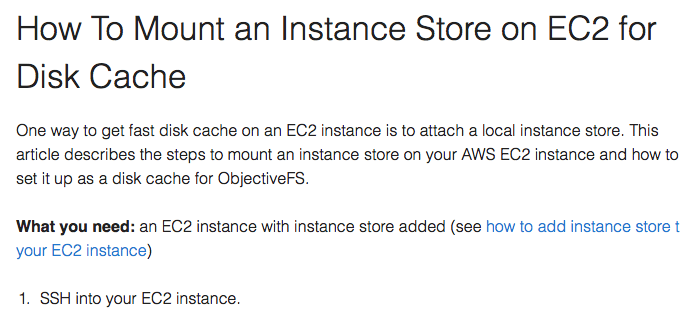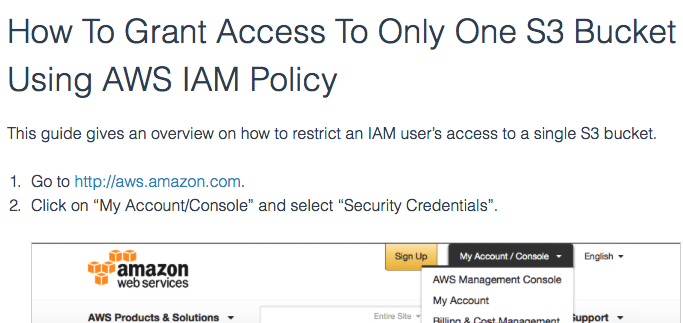How To Set Up Stunnel
This guide covers how to set up stunnel for endpoints that support only SSL.
Since ObjectiveFS has built-in client side encryption and always encrypts your data at rest and in transit, you don’t need to use stunnel for most cases. Common uses for stunnel are when using an on-premise object store that supports only SSL or when using the AWS server side encryption feature.
Steps
-
Install stunnel
$ yum install stunnel -
Edit /etc/stunnel/stunnel.conf with the following 4 lines:
For list of endpoints, see here[s3] client=yes accept=localhost:<port> ## e.g. localhost:8086 connect=<endpoint>:443 ## e.g. s3-us-west-1.amazonaws.com:443 -
Run stunnel on your command line (or using your init tools)
$ stunnel -
To use ObjectiveFS with stunnel, set the
http_proxyenvironment variable tohttp://localhost:<port>.TExample: Running the
listcommand using stunnel$ http_proxy=http://localhost:<port> mount.objectivefs list
by ObjectiveFS staff, January 6, 2016
ObjectiveFS is a shared file system for OS X and Linux that automatically scales and gives you scalable cloud storage. If you have questions or article idea suggestions, please email us at
お問い合わせはこちら

